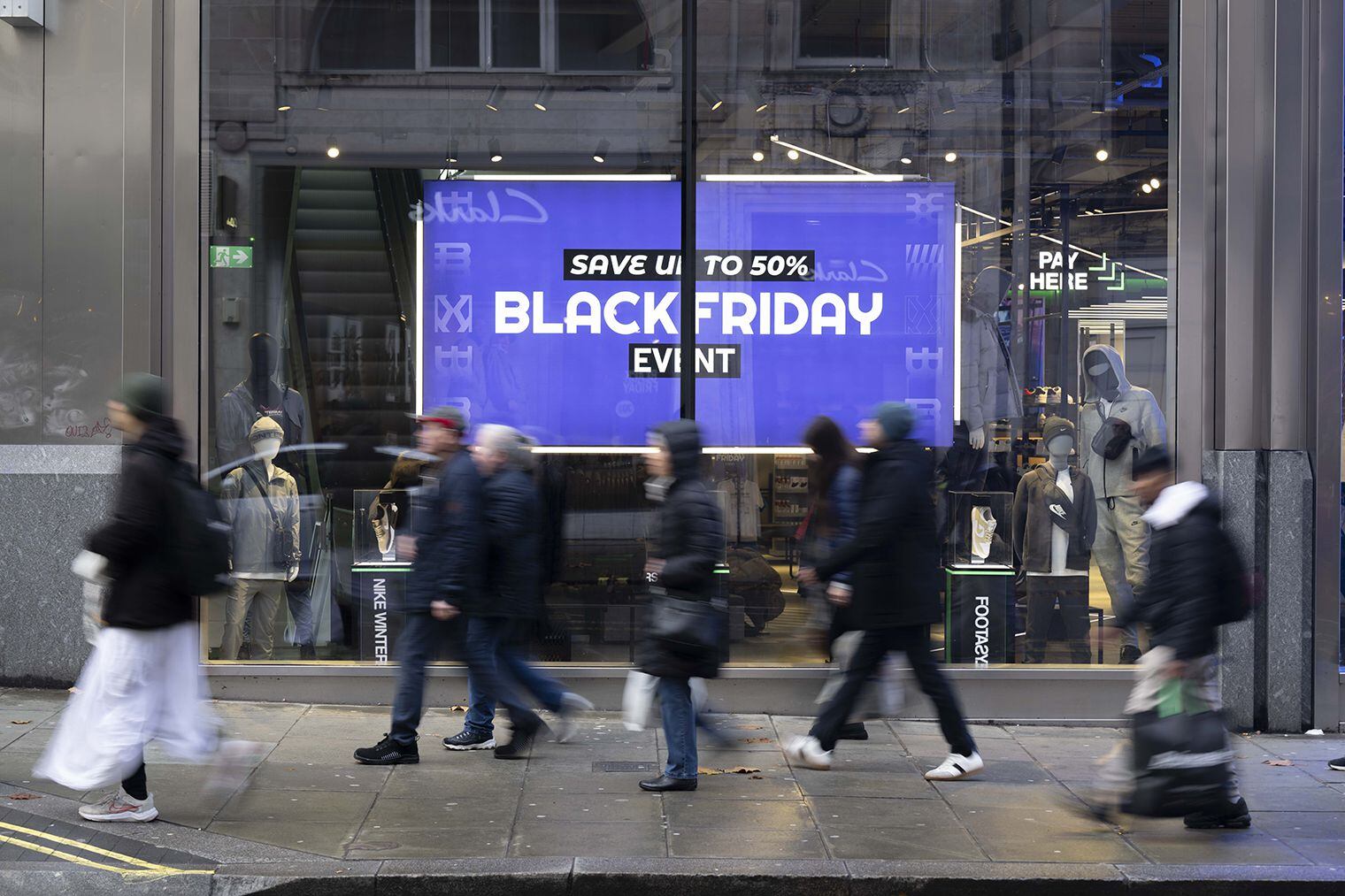
Once again, the consumer has prevailed.
Sales over Black Friday weekend grew at a higher rate than expected, multiple data sources show, indicating that shoppers are determined to spend money this holiday season despite challenging macroeconomic circumstances.
Overall spending grew low- to mid-single digits on a year-over-year basis, as shoppers made purchases in physical stores as well as online. But an active consumer alone does not portend a robust economy. Sales may be promising to retailers this holiday season, but how people have been able to afford to make purchases may tell another story.
“Just because consumers are spending doesn’t mean they’re healthy,” said Simeon Siegel, analyst at BMO Capital Markets. “When it comes to holiday shopping, the US consumer, for better or for worse, spends more money, is overly resilient and perhaps overextends.”
On the modest end of the scale, Mastercard’s SpendingPulse data platform reported that US sales on Nov. 24 — Black Friday — were up 2.5 percent year-over-year, driven by apparel and jewellery purchases. Over the same period, Shopify saw 22 percent growth, posting global sales of $4.1 billion on the e-commerce platform. Adobe Analytics’ e-commerce data, meanwhile, recorded $9.8 billion in sales on Black Friday, reflecting a 7.5 percent year-on-year uptick.
As of 6 p.m. EST, Cyber Monday has generated $8.3 billion in US e-commerce sales, Adobe found, ending a record-breaking weekend of consumer spending on track to total north of $37 billion, above Adobe’s initial projections.
Brick-and-mortar retail also saw substantial growth. Foot traffic on Black Friday was up 2 percent year-over-year in the US, according to analytics firm RetailNext, with the health and beauty category posting the highest growth: 13.3 percent.
Footfall at indoor malls and outdoor shopping centres spiked on Black Friday as higher as 300 percent compared to average daily visits in the months prior, according to Placer.AI. The relative increase was steeper in 2023 than 2022, the intelligence firm noted.
Promotions were also offered over a wider period than last year, with markdowns beginning ahead of Thanksgiving Weekend.
“The Black Friday weekend and Cyber Monday appear to have been reasonable for retail,” said Neil Saunders, managing director at GlobalData’s retail division. “However, growth has been muted overall and looks to be more modest than previous years.”
Consumers may be generous in their holiday spending, but that doesn’t mean they’re in a strong financial position. Over the summer, US credit card debt reached a historic high at more than $1 trillion, and balances have only continued to climb since then.
The use of buy-now, pay-later services, meanwhile, increased 14 percent year-over-year in November, according to Adobe Analytics. Klarna, a leading player in the space, reported a 29.5 percent uptick in usage among American shoppers on Black Friday, the company said in a statement.
Klarna published a survey earlier this month that found 47 percent of US respondents said they believe they won’t be able to fully pay off their holiday credit card bills.
“Given that many people are racking up debt and remain in a very cautious mood, we may see a slight softening of spending as we move into December,” Saunders said. “The consumer can’t defy gravity forever.”


